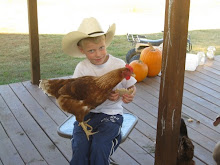Nothing makes your favorite recipe taste better than cooking with fresh herbs! Whether marinading meats, adding a little extra zip to salads, or spicing up an old favorite herbs make all the difference in the world. Remember, if you normally cook with dried herbs you will need to use just a tad bit more when using fresh herbs.
HERBS FOR THE COOKBASILS
CHIVES
CHERVIL
CILANTRO
DILL
FENNEL
LOVAGE
MARJORAM
MINTS
OREGANOS
PARSLEYS
ROSEMARY
SAGES
SALAD BURNET
SORREL
SAVORY
FRENCH TARRAGON
TEXAS TARRAGON
THYMES
BASIL – Always a big seller in spring! Used for pesto, pasta salads, Italian dishes and vinegars. With all basils, give them full sun, and for best flavor, keep flower heads pinched off. Harvest mid morning and add at the last minute when cooking. Warm season annual
Common Basil – The largest selling basil because it is the most well-known. A great choice for pesto, pasta, or anywhere you enjoy the flavor of basil. Easy to grow and very productive, one plant can yield up to a pound of fresh leaves! What a bargain compared to the grocery store.
Cinnamon Basil – A basil with a warm and spicy cinnamon flavor, purple veining and pink flower spikes, nice with fruit salads and Mexican dishes.
Lemon Basil – Great flavor combination and works well in fish dishes, chicken, pasta and vinegars.
Genovese – Considered by many to be the best basil for pestos and general flavor. Leaves are somewhat larger and darker than common basil.
Purple Ruffles Basil – Beautiful annual with deep purple, crinkled leaves gives an outstanding contrast in gardens. This basil adds gorgeous color to vinegars, salads, and sandwiches.
Red Ruben Basil – Same uses as Purple Ruffles. Both will be slower growing han green basils due to the deep purple coloration.
Spicy Globe Basil – A delightful plant that produces a thick and perfectly round mass of miniature basil leaves. Great for salads, seasoning, and vinegars! The 12 – 18 inch high plants are lovely planted in mass as an annual border.
Valentino Basil – Beautiful lettuce leaf basil that is delicious and showy in salads and on sandwiches. It’s tender and somewhat smaller leaves and neat growth habit of this very popular basil are an improvement over standard lettuce leaf basils.
African Queen – Unusual basil variety that is gaining popularity in the United States. Leave have a blue cast with blue-purple veining and flowers. A robust grower with a camphor flavor and scent, this is one of the few perennial basils but it is still tender and should be brought in for the winter.
CHERVIL – These delicious green leaves have a special subtle flavor and is considered one of the fine herbs of French cuisine. Best used in spring soups and salads or anywhere you would use parsley. Chervil makes a lovely garnish and is best grown during cooler seasons such as spring or fall. It can grow up to 18 inches tall.
CHIVES – The most delicate member of the onion family, fresh chopped leaves offer great flavor to salads, soups, vegetables, omelets, and cheese dishes. One of the essential kitchen herbs it is immune to insects and provides protection to neighboring plants. Onion chives produce lovely pink pom-pom flowers and garlic chives have showy white flowers with a distinctly garlic flavor. Flowers of both are edible and make great garnishes. Grow your chives in full sun and they will get about 15 inches tall.
CILANTRO – This slow-bolting form of coriander grown for its leaf production has become one of the most popular herbs in the United States due to the influence of Mexican and Asian dishes. In addition to salsas, cilantro makes a great pesto for fish. This full sun, cool season annual will often produce through our winters when planted again in the fall. Grows up to 12 inches.
DILL – One of the truly great culinary herbs. Dill has a strong affinity with sour cream and cucumbers but is also useful in breads, with fish, vinegars and cheese. This cool season annual readily self sows in and will bolt with the first heat of early summer. It is best grown in full sun.
Common Dill – Mainly used for seed production and pickling; grows up to 4 feet and will look better with staking.
Fernleaf Dill – Grown for its abundant leaf production, the fernleaf dill is a shorter bushier plant (up to 18 inches) neater in appearance and much slower to bolt.
FENNEL, FLORENCE – Chopped Florence fennel leaves are excellent with fish, soups, salads, and stews while the seeds are a nice addition in sweet breads and pork roast. Florence fennel forms a bulbous base of delicate anise flavor and crisp texture which is superb when sliced and served raw in green salads or quartered in chicken casseroles. It is also excellent for sautéing. Plant enough to share with the butterflies. Grow fennel in full sun and this plant will grow to 36 inches.
FENNEL, BRONZE – This outstanding perennial fennel has gorgeous bronze-red foliage and forms clumps, is evergreen in the South, and highly attractive to butterflies. The leaves and seeds can be used just like green fennel. This perennial may self sow and is best grown in sun to part shade and get about 30 inches in height.
LOVAGE – A fantastic celery substitute with no bitter aftertaste, lovage is very popular in England and Australia. It is excellent flavoring for soups, salads, stews, casseroles, or anywhere you would use celery. This vigorous, tall growing (up to 4 feet) perennial is one of the first to return in the spring. However, it needs extra moisture and likes partial shade.
MARJORAM – Beautifully sweet, balsam-like aroma, the flavor is similar to oregano but sweeter and milder. Try rubbing meats with fresh marjoram leaves before roasting or add to sausage and meatloaf for a special flavor. It is a must in German potato salad. This tender perennial is sometimes hard in the South but can be wintered indoors if need be. It grows to about 8 inches in height.
MINT – No green thumb is required for growing these tough little splashes of flavor and aroma! They have a multitude of uses in the kitchen, in commerce, and in medicine. Mints can be grown indoors or out in full or part sun. All mints are low growing and spread by runners. They should be contained unless you want them to spread. Don’t be fooled by “mint seeds” as true mint cannot be duplicated except by cuttings.
Apple – The soft gray-green leaves have an apple menthol fragrance and is delightful in teas and fruit salads. A large planting of this aggressive grower can cover a hillside in one season!
Chocolate – One of our favorites, this mint is a peppermint patty for the nose and palate! The bronzy peppermint-like foliage is delicious in coffee and cookies or just to eat by itself!
Orange – Treasured for its special fragrance its unmistakable citrus aroma is fantastic in fruit punches, teas, orange juice, and potpourris. The orange mint oil is an ingredient in chartreuse and many perfumes. It makes a lovely and useful plant in a hanging basket.
Peppermint – Also known as candy mint, a tea from this mint is a refreshing alternative to coffee or regular tea. It is excellent for stomach indigestion and lends itself to many uses in the kitchen.
Pineapple – A spin-off from apple mint, but with lovely white variegation and a sweeter, fruiter scent this variety is great in fruit salads and as a garnish; it works well with chicken too! Not as aggressive as apple, pineapple mint works well in containers with other plantings.
Spearmint – The best cooking mint and is excellent with carrots, peas, potatoes, and for making mint sauces for roast lamb. For a real treat try it in green salads or tabouli and other Greek dishes for a flavor sensation!
OREGANO – Used in Italian, Spanish and Mexican cuisine, no herb garden is complete without this indispensible plant. The hot spicy flavor compliments almost all tomato dishes and is desirable in beef or lamb stews, soups, salads, or casseroles.
Common – The most well know variety, a very hardy perennial, and grows to 12 inches.
Greek – This hardy, robust oregano is collected in the wilds of Greece and produces white flowers. Considered to have an excellent and consistent flavor and grows up to 15 inches in height.
Italian – Milder and sweeter than other varieties, this oregano grows more upright with lighter green leaves. It is similar to marjoram but a little hardier.
PARSLEY – It underlines flavors without overpowering them and compliments almost every dish. It cannot be surpassed in the kitchen for its versatility. The fresh green appearance and fragrant aroma delight the eye and stimulate the appetite. Parsleys are rich in vitamin C and are a natural breath freshener.
Curly – Probably the most well known selling herb in the world, curly parsley is great in tabouli, soups, salads, and of course as a garnish. In the South, it is lovely planted as a backdrop for pansies as it provides deep rich green foliage throughout the winter. It is a hardy and evergreen biennial.
Flat Leaf Italian – This is the original parsley with a far superior flavor to the curly. Taste the two and compare them yourself! It always adds true European character to soups, stews, and salads.
ROSEMARY – One of the most fragrant and memorable herbs with many unexpected uses makes this versatile herb a must for any garden. Rosemary is delightful in poultry stuffing, great with roasts, breads, dumplings, biscuits, and even as a sweetened desert sauce. It is excellent in home-made/organic soaps and shampoos. Hair and skin rinses are even made from Rosemary tea. This attractive evergreen boasts needle-like leaves and pale blue flowers and is hardy through most sections of the South.
ARP – Most winter hardy strain to Zone 6 with grey-green upright foliage and grows uo to 3 feet in height.
Officinalis – Standard upright variety with deep green leaves and hardy to Zone 7.
Prostrata “Irene” – The most attractive prostrate form and a prolific bloomer, Irene, is nice in hanging baskets and hardy to zone 6. It must be wintered inside and grows to about 12 inches in height.
Salem – An overall favorite this mid-range hardy, upright variety has very deep green leaves, somewhat wider than the others and grows to about three feet tall.
SAGE – One of the culinary all-stars but also an important medicinal herb makes it a must for all herb gardens. Well known for its role in dressings and as a poultry and sausage seasoning, Sage is also great in butter, sauces, breads, and vinegars. Sage tea is a digestive aid and is used to relieve sore throats, PMS, and menopausal symptoms. It must be grown in full sun.
Common or garden variety – The most widely grown and used sages. This hardy perennial is an evergreen in the South, easy to grow and attractive in the garden with its gray foliage and display of blue flowers in early summer
Berggarten – A choice strain of sage with larger and rounded grey-blue leaves and a pungent aroma and flavor. It is a hardy perennial, usually evergreen, and will grow to about 24 inches in height.
Clary – This biennial sage grows to 16 inches tall and attracts bees and butterflies. It has a medicinal history of alleviating eye problems and is a beautiful bloomer with tall blue aromatic flowers.
Pineapple – This tender perennial can become quite large (up to 3 feet) in one season when grown in full sun and is considered an annual. It has a fabulous pineapple scent and brilliant red flowers from late summer till frost. Both leaves and flowers made a great addition to fruit salads, roast pork, chicken, cheese, jams and jellies. It is lovely as a garnish for a punch or summer drink. Best of all it attracts both butterflies and hummingbirds!
Honeydew – Similar to Pineapple this tender sage plant is stockier, shorter, and earlier blooming. The heart-shaped leaves and red bloom offer a sweet melon scent.
Golden and Purple varieties– These lovely variegated plants have the same uses as the common or garden variety Sage. They are hardy and evergreen and make a great addition to a container of mums in the fall.
Tri-Color – Green, cream, and pink are the colors that make this Hardy, evergreen sage so unique. While the uses are the same as the common or garden variety the tri-color is beautiful in containers as it tends to cascade more than the other varieties.
SALAD BURNET – A beautiful hardy evergreen edging plant with small toothed leaves and raspberry shaped blossoms in the spring, Salad Burnet offers a cooling cucumber flavor and is a great addition to salads, vinegars and tomato juice. Grows in full sun up to 12 inches and is especially charming after a rain or heavy dew as droplets edge the unique leaves.
SAVORY – Often called the “bean herb” because of the warm peppery character they add to a bean, pea or lentil dish. It is also excellent in chilled vegetable juices, cabbage dishes and meatloaf. Savory is easy to grow in full sun and is drought tolerant.
Winter savory – An attractive low evergreen bush excellent for borders and edging with a pungent flavor boast lovely pink flowers in early summer. This hardy perennial will grow to 15 inches in height.
Summer savory – More delicate in flavor than winter this savory is a little gangly in appearance and is considered an annual.
SORREL – Garden sorrel or French large leaf sorrel is most famous for sorrel soup and sauces. The large succulent, slightly acidic leaves are also a real treat in salads. Keep flower heads removed and use the very young, tender leaves. It is a hardy perennial and needs to be planted in full sun or part shade. It will grow to about 12 inches tall.
TARRAGON, FRENCH – Another of the truly great culinary herbs and essential to French cooking, French Tarragon has a distinctive flavor suggestive of anise or licorice. Essential in béarnaise, hollandaise, and mousseline sauces it also adds a lovely touch to omelets, marinated meats, and poultry stuffing. Why not try a little tarragon vinegar for salad dressings or tarragon butter with steamed vegetables? A sterile plant can only be propagated by cuttings and prefers cooler weather. If summers become unbearable, store this hardy perennial in the refrigerator or freezer till fall. It must have well drained soil and full sun.
TARRAGON, TEXAS – also known as Mexican Mint Marigold is an acceptable substitute for French tarragon and is easier to grow in Southern climates where this plant thrives in both heat and humidity. Tall bushy plants produce lovely yellow edible blossoms from late summer until frost. This half hardy perennial will come back after most Southern winters, grows to 30 inches tall and should be planted in full sun.
THYME – This very aromatic, low growing bush or creeping herb is ideal for rockeries, borders, or along pathways. The pretty pink or purple blossoms are a favorite of honeybees. This all around herb is great for culinary and medicinal uses and works beautifully in most landscaping.
English or Common – This is the most popular variety for culinary use and produces larger leaves with pink undersides. It is a robust grower and indispensible in French cooking. English/Common thyme tastes great in soups, stews, stuffed inside a roast chicken, with fish, or in carrots. It also makes a great garnish! This hardy perennial grows to about 18 inches tall and is usually an evergreen in the South.
Creeping Red Thyme – This low, mat-forming thyme will become covered in rose pink blossoms in early summer and looks great in rock gardens and pathways, especially beautiful as a contrast to woolly thyme.
Elfin Thyme – This thyme is a very low growing dense mat of tiny, dark green leaves and is excellent as a ground cover, in between flagstones and fives a moss-like effect when grown in a full sun location.
Lime Thyme – This low creeping thyme makes a great ground cover and provides a nice citrus flavor when used in cooking.
Golden Lemon Thyme – The popularity of this variety is due to both its striking appearance and its great fragrance and flavor. The spreading bushy plant has leaves that are strongly variegated with gold and the flavor and fragrance is amazing. It works well fish and chicken and in vinegars.
Mother of Thyme – This variety is very popular for medicinal and culinary uses. However, it also makes an excellent ground cover which stands up to heavy foot traffic and releases fragrance with each step. In summer you will enjoy beautiful purple flowers from your Mother of Thyme.
Silver Edged Thyme – Another well known and well liked culinary thyme that provides striking contrast in the garden. The lovely spreading bushy habit makes it popular in herbal landscaping.
Woolly Thyme –This lovely low carpet of grey, fuzzy leaves and pale pink flowers lacks the scent or flavor but its virtues are visual and tactile. Woolly thyme prefers dry conditions and works well in grey gardens or provides a nice contrast for greener herbs.













































































